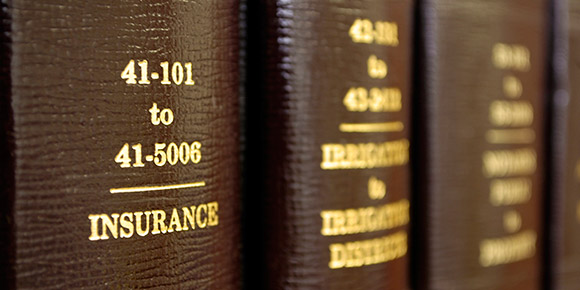NINA E. KALLEN
- 40 FLORIAN STREET
ROSLINDALE, MA 02131 - (617) 363-0547
- fax: (617) 344-6041
- nkallen@kallenlawyer.com
- www.kallenlawyer.com
- insurancecoveragemassachusetts.blogspot.com
Winning your first (Or Next) Summary Judgment
I. DO YOU WANT TO WIN ON SUMMARY JUDGMENT?
Yes.
II. THE SUMMARY JUDGMENT PROCESS FROM A JUDGE'S POINT OF VIEW
Judges can deny summary judgment with a decision on the margin, but to grant summary judgment they have to issue a written decision. Therefore, to win on summary judgment you have to convince a judge that it is a good use of his or her very limited time and resources to write the decision. This means that your written material has to demonstrate that the law and facts support summary judgment, and contain no misstatements of law or fact. You want to leave oral argument having given the judge a general impression that he or she wants to grant summary judgment, so that the judge will tell his or her law clerk to write the decision in your favor.
III. BEFORE DISCOVERY
Research the elements of every count of the complaint.
IV. DURING DISCOVERY
Use your research to make sure that you ask questions regarding the factual basis of every count of the complaint.
V. THE MOTION ITSELF
A. THE HEADING
The heading should specifically identify the party bringing the motion, such as:DEFENDANT JOHN SMITH'S MOTION FOR SUMMARY JUDGMENT
The goal is to make the document easy for the judge, session clerk, or law clerk to identify and find.
B. BODY OF THE MOTION
The motion should be no more than two pages; one is better. Begin by saying, "Now comes the defendant John Smith and respectfully moves for summary judgment. As grounds, John Smith states that …." Then list the arguments laid out in your motion. End by stating, "In further support of this motion, Mr. Smith relies on the attached memorandum of law."
VI. MEMORANDUM IN SUPPORT OF THE MOTION
A. THE HEADING
The heading should specifically identify the party bringing the motion, such as:DEFENDANT JOHN SMITH'S MEMORANDUM IN SUPPORT OF HIS MOTION
FOR SUMMARY JUDGMENTB. THE INTRODUCTORY PARAGRAPH
The introductory paragraph should begin, "Defendant John Smith respectfully moves for summary judgment. As reasons for this motion…." Then list your arguments, as in the motion itself. Some practitioners state that you should not repeat language word for word, but I disagree. If you have found the best, clearest, most concise way to make your argument, don't be afraid to repeat it.C. SECTION ON UNDISPUTED FACTS
This section should begin: "For the purposes of this motion only, Mr. Smith accepts the following facts as undisputed." Then list the relevant facts. If relevant facts are disputed, state only the opposing side's version of them. (If you can't win your motion based on the other side's version of the facts, then you can't win your motion.) You may, if you wish, state your client's version of a disputed fact in a footnote. Each fact must be followed by a citation to an exhibit, which may consist of deposition transcripts, affidavits, pleadings, or discovery responses. End this section by stating, "The plaintiff, Ms. Jones, has wrongly brought a complaint alleging …." List each count of the complaint. "As the undisputed facts demonstrate that Ms. Jones cannot prevail on any of her claims, this court should grant summary judgment to Mr. Smith."D. ARGUMENT SECTION
This section should begin by stating the standards for summary judgment. One adequate version of these standards is:Summary judgment should be granted where there are no material facts in dispute and the moving party is entitled to judgment as a matter of law. Cassesso v. Commissioner of Correction, 390 Mass. 419, 422 (1983); Community National Bank v. Dawes, 369 Mass. 550, 553 (1976); Mass. R. Civ. P. 56c. The moving party bears the burden of affirmatively demonstrating the absence of a triable issue, and that the moving party is entitled to judgment as a matter of law. Pederson v. Time, Inc., 404 Mass. 14, 16-17 (1989). Where the party moving for summary judgment does not have the burden of proof at trial, this burden may be met by either submitting affirmative evidence that negates an essential element of the opponent's case, or by "demonstrating that proof the at that element is unlikely to be forthcoming at trial." Flesner v. Technical Communications Corp., 410 Mass. 805, 809 (1991); Kourouvacilis v. General Motors Corp., 410 Mass. 706, 716 (1991). Once the moving party establishes the absence of a triable issue, the party opposing the motion must respond and allege specific facts establishing the existence of a material fact in order to defeat the motion. Pederson, supra at 17.
It is acceptable to skip the summary judgment standards and merely state, "The standards for summary judgment are well-known and need not be repeated here." I prefer the long version because you never know what new judge, law clerk, or judicial intern might be writing their very first decision.
After you have stated the summary judgment standard, make your argument. If you are seeking complete (as opposed to partial) summary judgment, you must make an argument about why each and every count should be dismissed. Each argument must have a different point heading. You should make at most three major arguments; two is better; one is best. The simpler your motion, the more likely that a judge will grant it. (Remember, a judge may deny summary judgment on the margin, but a grant of summary judgment requires a written decision.)
Every statement of law must be followed by a citation to the source. If citing a statute, also cite at least one case which confirms that the statute should be understood by its plain language.
SHEPARDIZE!
Apply each legal argument to the facts stated in the undisputed facts section, and explain why under the law and the facts summary judgment should be granted.
E. CONCLUSION
In one paragraph, reiterate why summary judgment should be granted on each count of the complaint. This paragraph may more or less repeat the introductory paragraph.End by saying:
WHEREFORE, Mr. Smith respectfully requests that this motion for summary judgment be granted.
VII. CONCISE STATEMENT (SUPERIOR COURT)
A. THE HEADING
The heading should state:DEFENDANT JOHN SMITH'S CONCISE STATEMENT IN SUPPORT OF HIS
MOTION FOR SUMMARY JUDGMENTB. BODY
The body should begin, "The defendant John Smith respectfully submits this concise statement of undisputed facts pursuant to Superior Court Rule 9A(b)(5) in support of his motion for summary judgment."Then have a point heading stating "Undisputed Facts".
You can copy your undisputed facts section from your memorandum, turning each sentence with citation into a separately numbered paragraph. If you can't do this, revisit your memorandum to make sure it is well-organized and that each fact you state has a citation to the record.
VIII. EXHIBITS
If you have more than three exhibits, you should have a table of contents for your exhibits. Your exhibits should have side tabs. (Remember, the point is to make everything as easy as possible for the judge.)
IX. READING THE OPPOSITION
When you receive the opposition, read it! Read the cases cited and determine if they stand for the proposition claimed. Shepardize the cases to make sure they are still good law.
X. FILING A REPLY BRIEF
You should file a reply brief if the opposing party has made a statement of fact in its opposition that you need to undermine with an opposing statement of fact supported by admissible evidence.
If the opposing side raises a new issue of law not touched in your motion, you may want to file a reply brief discussing this new issue, especially if you will be citing additional cases in your discussion.
If the opposing side makes a gross misstatement of law, you may want to file a reply brief. Tactically, however, you may want to save this for oral argument so you do not tip your hand. The downside of doing this is that a judge may forget or fail to listen to your oral argument, or may give the motion papers to a law clerk not present at oral argument.
XI. PREPARING FOR ORAL ARGUMENT
If more than a month has passed since you drafted the brief, reshepardize your cases and look for new cases on point.
Prepare notes of your argument on one page of a legal pad.
Prepare oral argument with the assumption that the judge has not looked at the written material. Then prepare your oral argument with the assumption that the judge has carefully read the material and the cases you cited. Have a strategy for dealing with your weak points.
Practice. Practice again. Practice in front of someone. Practice in front of someone who will interrupt you and ask questions.
Bring an extra copy of your motion and all accompanying documents with you, in case the court has lost its copy.
If your client will be attending oral argument, tell him or her beforehand what your argument on summary judgment will be. Make sure that you have prepared your argument to win, not to impress your client.
XII. AT ORAL ARGUMENT
Nina Kallen, a litigator in Massachusetts, subcontracts to other attorneys on brief-writing and sundry other legal work, including tutoring on effective legal writing, and also represents parties in litigation.If the judge does not interrupt you or give any indication that he or she wants you to proceed otherwise, your oral argument should be as follows:
Introduce yourself and state who you represent.
Give a one phrase description of what this case is about. Give a one sentence description of why you should win. ("This is a slip and fall on snow and ice case. My client is requesting summary judgment because the plaintiff has offered no evidence in the course of discovery that my client had been hired to clear snow from that part of the property.")
Briefly describe the relevant undisputed facts of the case.
Describe why summary judgment should be granted. I look for opportunities here to grab the judge's attention by telling him or her that I am dropping one of my arguments, and stating why. This lets the judge know I am not going to waste the court's time. Alternatively, if I have an argument that I now believe is weak, I tell the judge that I will rely on the written papers for that argument.
Mention the names of cases in support of your propositions of law, but only discuss the facts of cases if they are very analogous to your facts.
Give a brief concluding statement
If the judge asks questions, listen to the questions and answer them. If you do not know an answer, admit it and offer to further brief the issue. After responding to the judge, continue with your argument. If the judge indicates he or she does not want to hear a certain point, move on. If the judge indicates he or she is going to rule in your favor, thank the judge and sit down.
Listen to the other side's argument. Do not interrupt (except with righteous indignation to any attack on your ethics). If opposing counsel mischaracterizes any fact or law ask the judge for permission to respond. You will usually get about 30 seconds of the judge's attention to do this.





